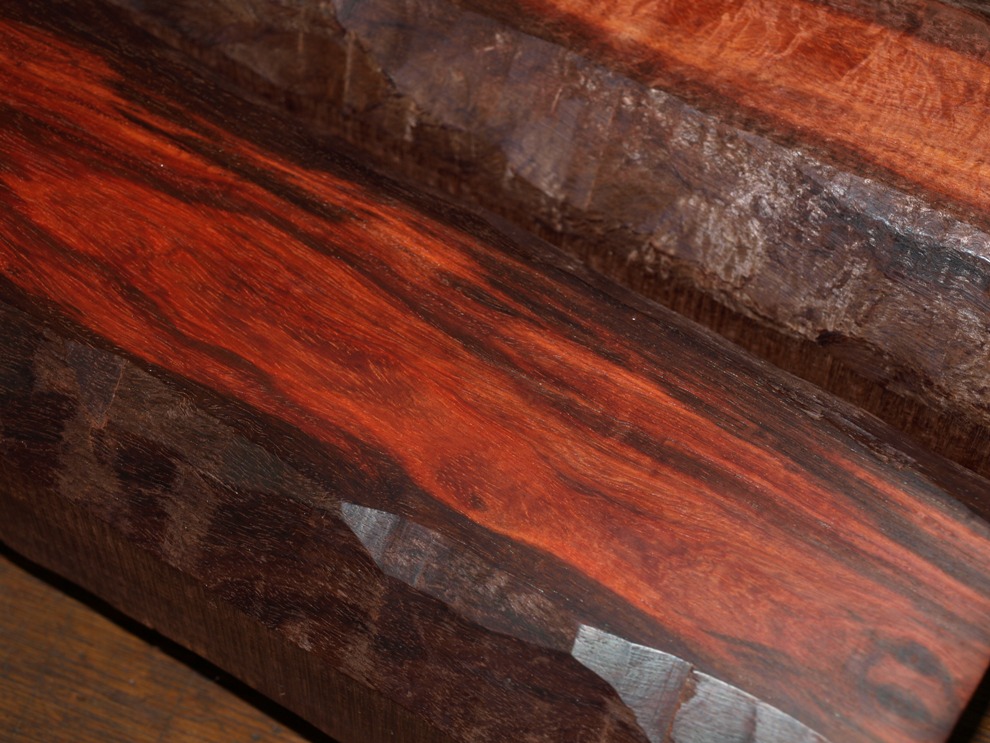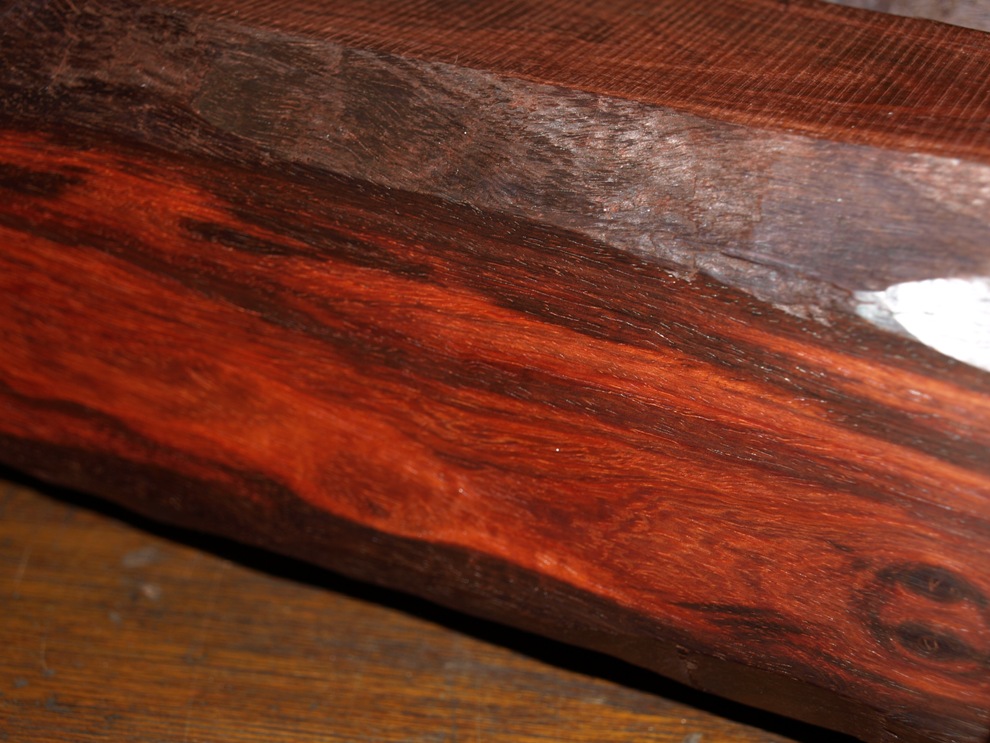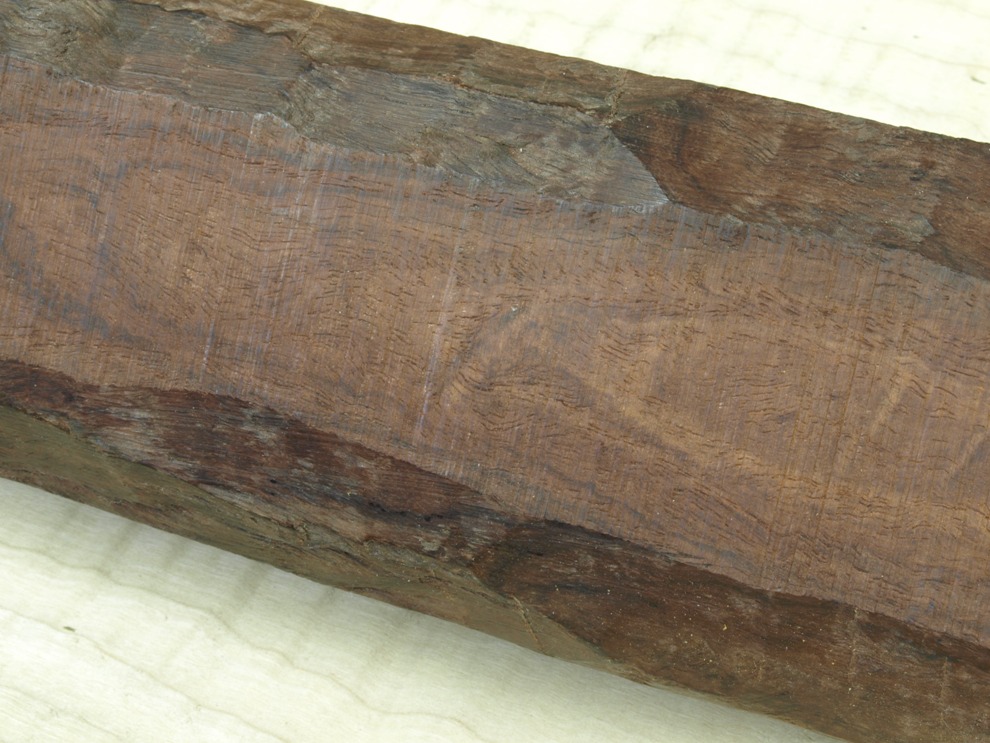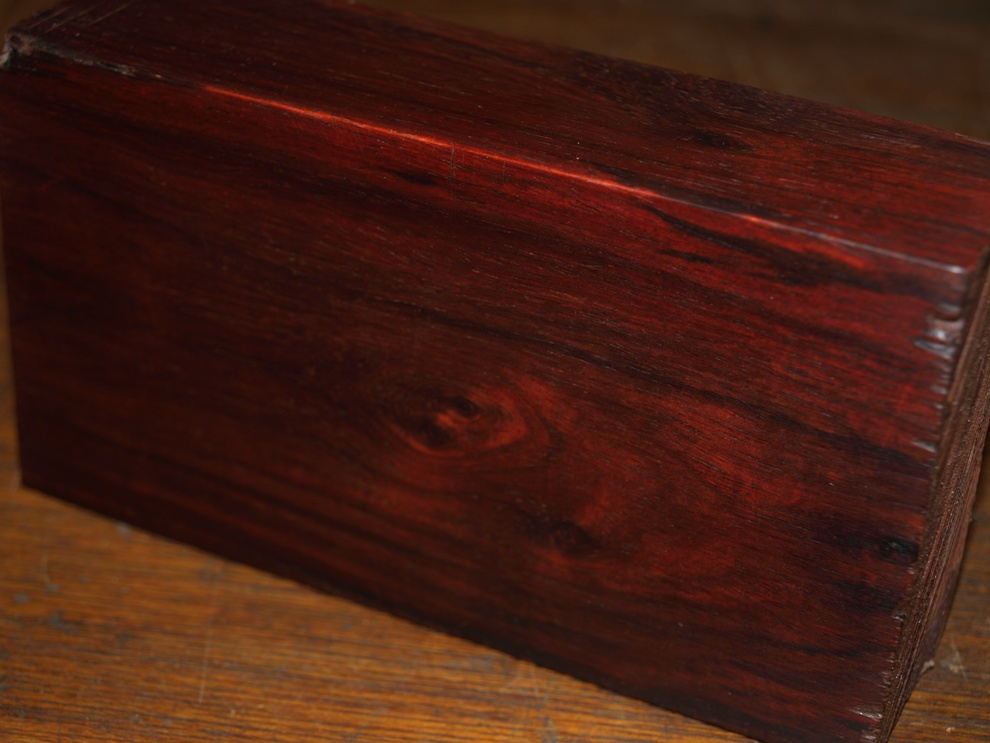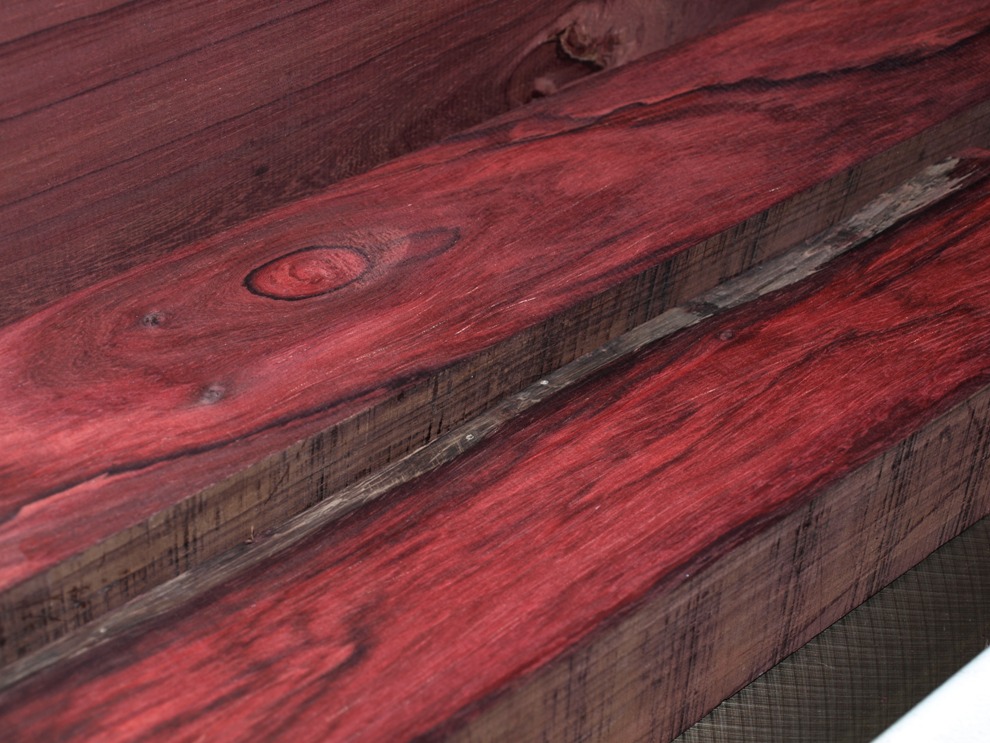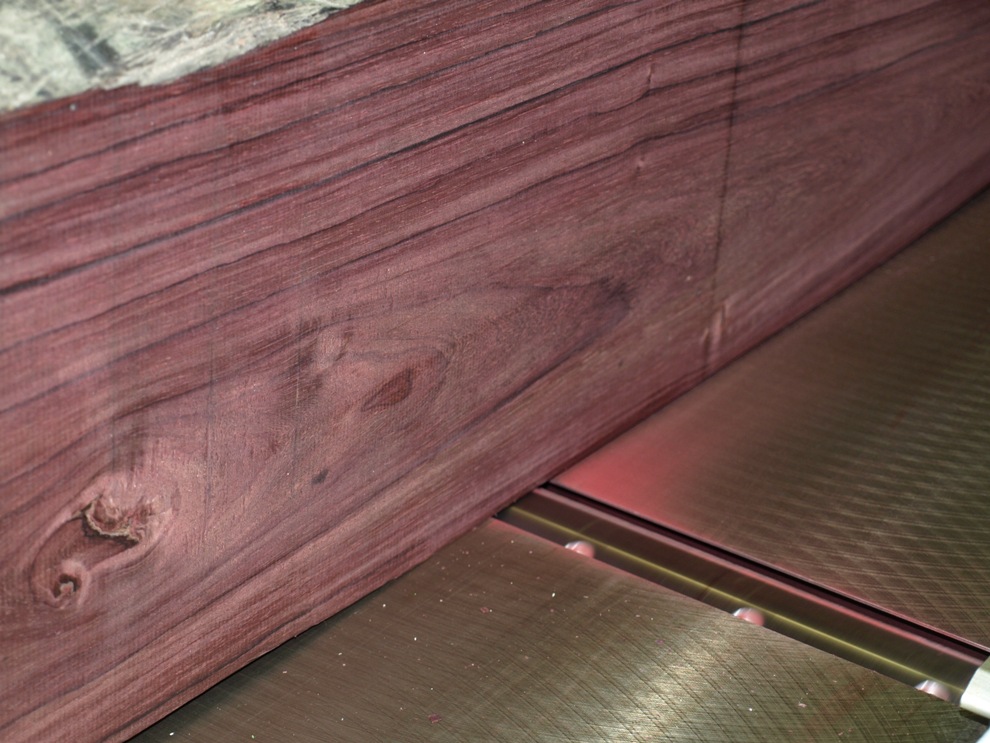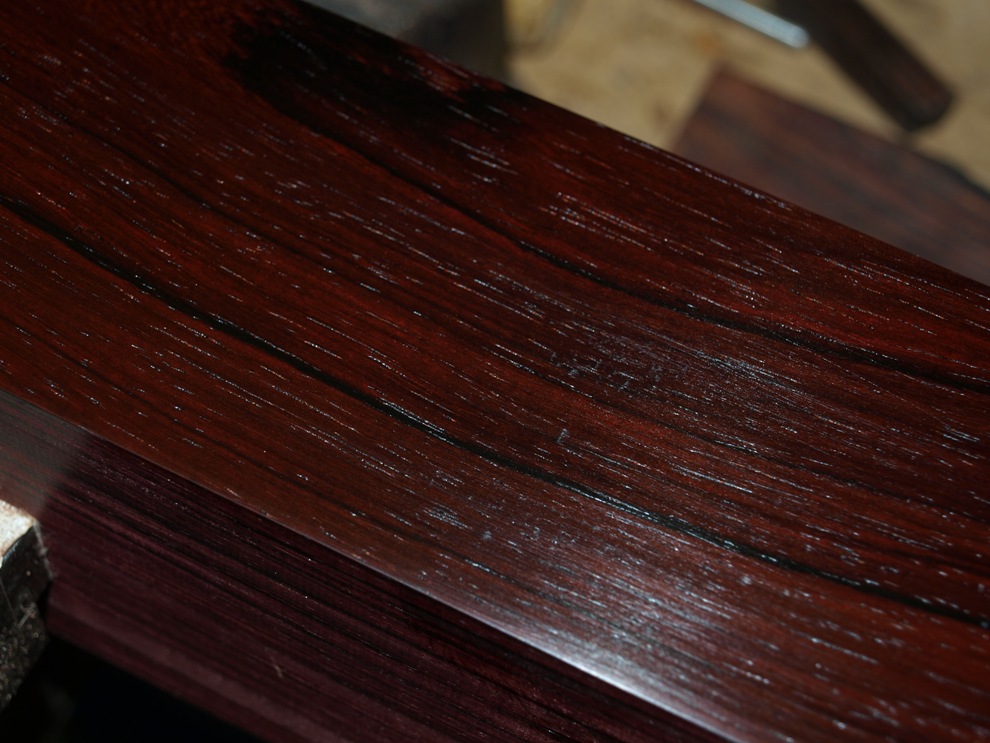I have obtained some very exotic woods over the past few years but undoubtedly at ‘the top of the tree’ would be Zitan (pterocarpus santalinus), a much coveted wood by the Chinese. There is some more information on my website .
It has always been my intention to fill some of my small low angle planes with this very rare and valuable wood. I think this wood is unknown to most Westerners. I really want to use this in some very special editions. Normally the cost of materials is a small percentage of the price of a plane compared to the labour cost but these planes will have to be at a premium. In the scale of things it would be justifiable to use this extravagant material.
These planes will be rare as I only have a small amount of this wood and I have more chance of winning the lottery than obtaining more (even allowing for the fact I don’t buy lottery tickets!).
These are two very good examples of the oriflame colouring that Zitan is known for. Once exposed to the light and atmosphere it will go dark and in some cases black.
This is the Zitan log as it arrived. It has probably been exposed for some time. It does seem to be very dull and gray as the surface has a rough texture without any finishing.
There is a lot of variation in colour and contrast after long exposure to light. It is about 3 years since I resurfaced this piece and it has still maintained its colour and contrast, also showing its chatoyant quality.
Having made some research of my own and finding other common names (Red Sandal Wood, red Saunders, ruby Wood) it would appear that these names are very loose terms and can be used for other types of this species. You have to be very careful when the name Red Sandal wood is being used – the true common name for P. Santalinus is Purple Sandalwood. To avoid any confusion you really are looking for Santalinus not Santalum.
It seems to me that I am one of the few people who have put anything into print about this species and I am now listed with Google on this subject – slightly worrying!
Another wood that crops up quite a lot is the Dalbergia louvelii which in many cases has been passed as another form of Zitan. This is also a rare wood and there is little information about it.
Here the Dalbergia Louvelii has a freshly textured surface which will go very dark. This certainly demonstrates the similarities with Zitan.
This is the Dalbergia Louvelii again, a considerably aged heavy board. Typical of Dalbergia, with the contrast returning with age
This is a quarter cut view of the Dalbergia Louvelii, with the wood textured. As you can see it is already starting to go dark. The wood can be lightly oiled which gives it a little more depth and in time some of the contrast returns. This can be said for both the Louvelii and the Zitan.
